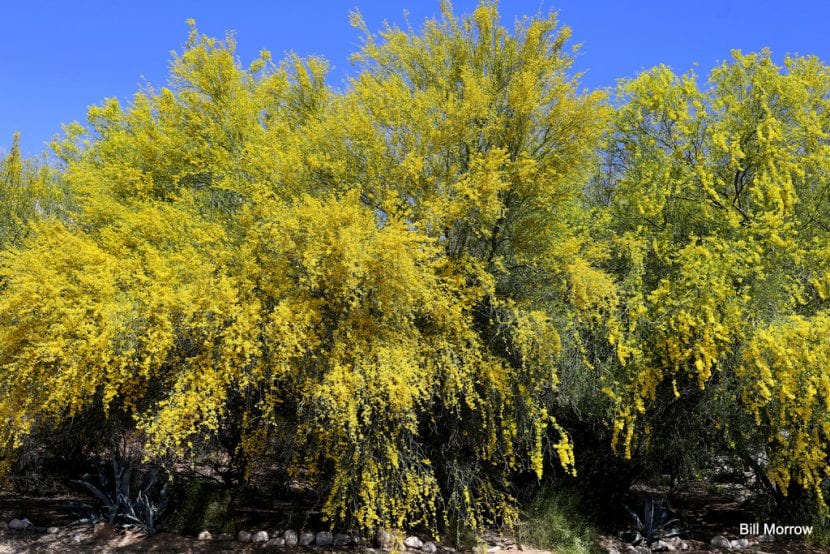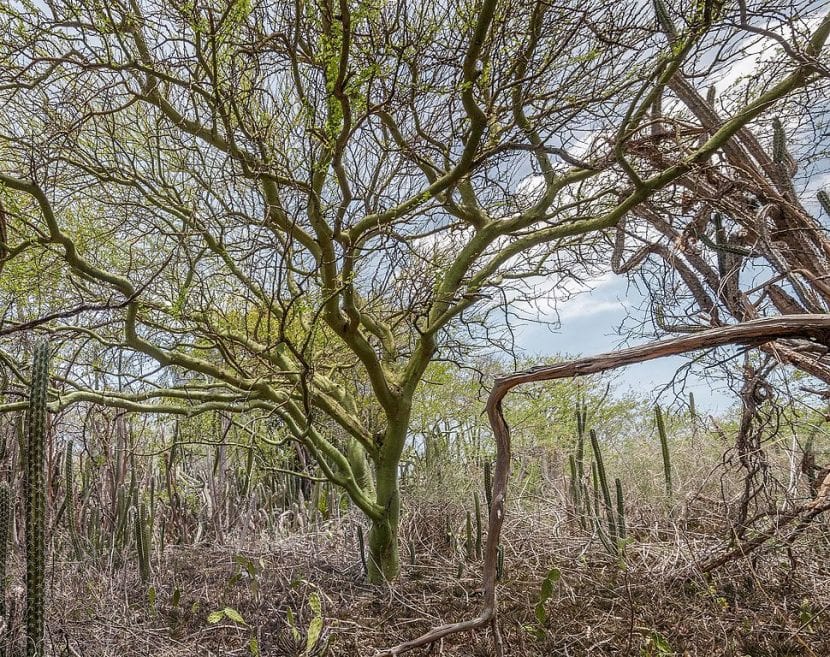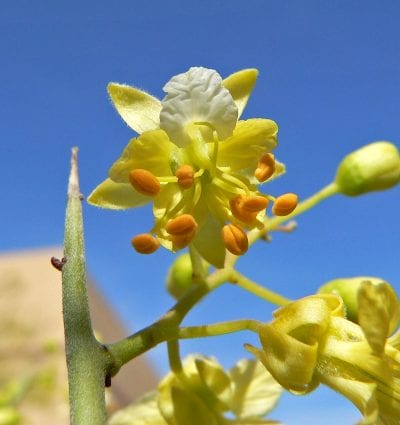
Parkinsonia aculeata
Image - Flickr / bill85704
Plants of the genus parkinsoniaIf they are characterized by something, it is because they are shrubs or trees that are very resistant to drought, in addition to producing a large number of flowers. In fact, they are widely cultivated in regions where drought is often a problem, such as in areas that have a Mediterranean climate.
In addition, they tolerate high temperatures very well, and if they are pruned, they can even be kept in pots (large).
Origin and characteristics

Parkinsonia precox
These are deciduous trees or shrubs belonging to the genus Parkinsonia, which is made up of a dozen species native to the semi-desert regions of both America and Africa. As usual, reach a height between 5 and 12 meters, and may or may not have spines. The leaves are bipinnate, with very flattened and long leaflets or pinnae, green in color.
The flowers are hermaphroditicThey are 1-2cm wide and are yellow or whitish depending on the species. The fruit is a leathery legume, inside which it has oblong shaped seeds.
Main species
The most popular are:
- Parkinsonia aculeataKnown as palo verde, espinillo, or cinna-cin, it is native to the southwestern United States and South America. It reaches 10 meters in height, and is thorny.
It is probably the most widely cultivated in temperate and subtropical zones, although it has a high invasive potential. florid parkinsonia: known as paloverde azul, it is a native tree of the Sonoran desert. It reaches a height of 10 to 12 meters. - Parkinsonia precox: known as Brea, Chañar brea, Palo verde or Breña, it is a native shrub or tree from Patagonia Argentina to the Arizona desert. It reaches a height of 5-6 meters. Their life expectancy is short: 20 to 30 years.
What are their cares?

Parkinsonia microphylla
Image - Wikimedia / Stan Shebs
If you want to have a copy, we recommend you take care of it as follows:
- Location: it must be outside, in full sun. To avoid problems, it must be planted at a minimum distance of 6 meters from pipes, soil, etc.
- Earth:
- Flowerpot: not picky. With universal growing medium it will go well.
- Garden: grows in well-drained soils.
- Irrigation: rather scarce. About 2 times a week in summer and every 6-7 days the rest of the year.
- Subscriber: in spring and summer it is grateful for a regular monthly contribution of organic / homemade fertilizers.
- Multiplication: by seeds in spring.
- Pruning: at the end of winter cut dry, diseased or weak branches, and trim those that are growing too much.
- Rusticity: It depends on the species, but in general they resist frosts down to -5ºC.
What did you think of Parkinsonia?
Can you give me more information about pitch?
I have an 8-year-old tree, called tar with thorns, with yellow flowers, at the end of July 2020 I had it pruned for the first time, totally leaving only the thick trunks .. Well, we are already in October all the neighboring trees are sprouting in an advanced way , and not my tree. I felt comments that a few days ago, that the Brea was not pruned, less in its entirety, that they generally dry out, that my tree died. It is very sad for me just to imagine that it may be true.
Catamarca-Cap.
Hi Claudia.
You mean the Parkinsonia precox? In reality, no plant is to be pruned unless necessary. Parkisonia are trees that can withstand small pruning, but it is not advisable to do them.
My advice is to scratch the trunk a bit, to see if it is still alive. On this article you can know what else to do to make sure he's still alive or not. Lucky.
Interesting information, thanks. It is a tree that my wife likes and she suggested putting one in a pot which I objected to out of ignorance. Now to plant one, get it in the field or in a nursery.
Thank you very much, Michelangelo.
By the way, be careful with taking plants from the field. If the area is protected by law, and/or if the species is, it is a practice that is prohibited in many countries (I would say in all).
Parkinsonia seeds are usually easily found for sale on online sites such as ebay or amazon.
A greeting!